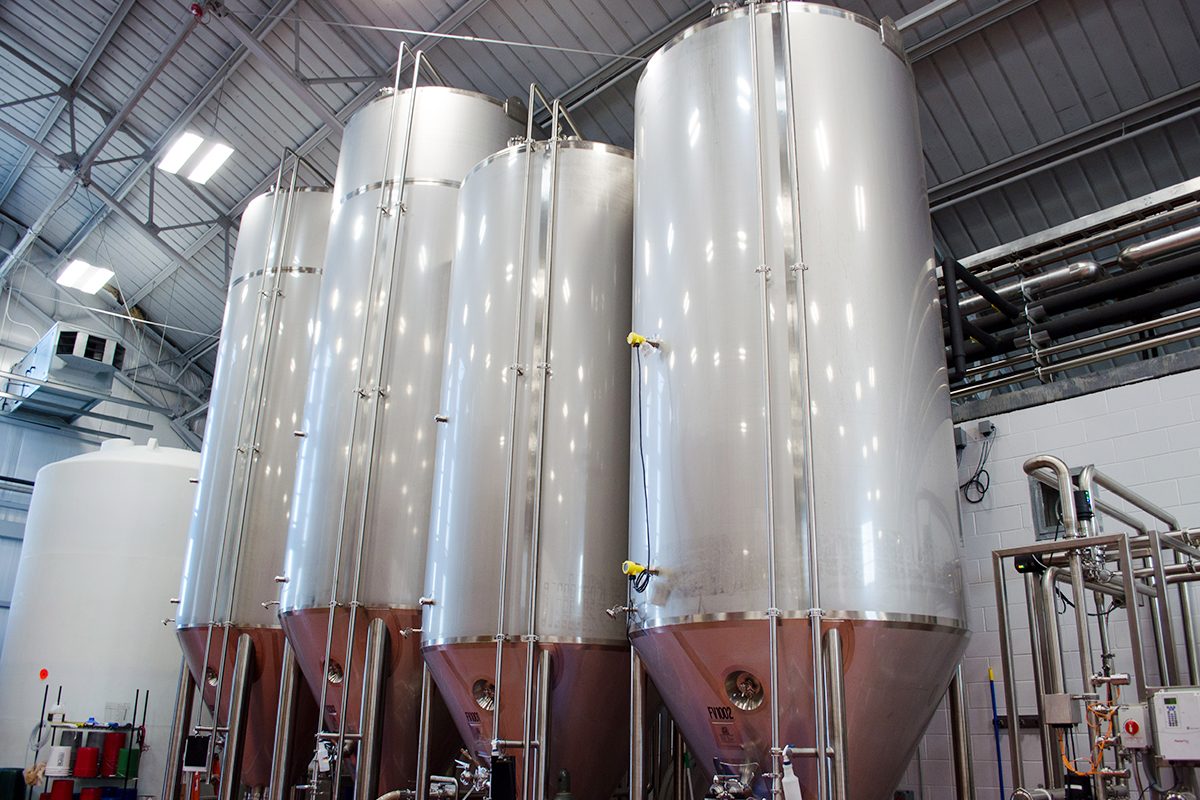
The Role of The Fermentation Tank Headspace
In the fermentation process, the headspace within a fermentation tank plays a crucial yet often underappreciated role. The headspace refers to the space between the liquid being fermented and the top of the tank. While this space may seem insignificant, it helps manage gas exchange, pressure, and foam production. As yeast ferments sugars into alcohol and carbon dioxide, the headspace provides the necessary room for the gas to accumulate and safely vent without causing excess pressure or damaging the tank. Moreover, it helps in maintaining the optimal environment for yeast health, ensuring that oxygen levels are controlled and preventing unwanted oxidation. Proper headspace management can avoid excessive foaming and improve the overall efficiency and safety of the fermentation process. Understanding the role of headspace is vital for both small-scale craft brewers and large industrial fermentation operations to ensure consistent product quality and safety.
Complete Guide
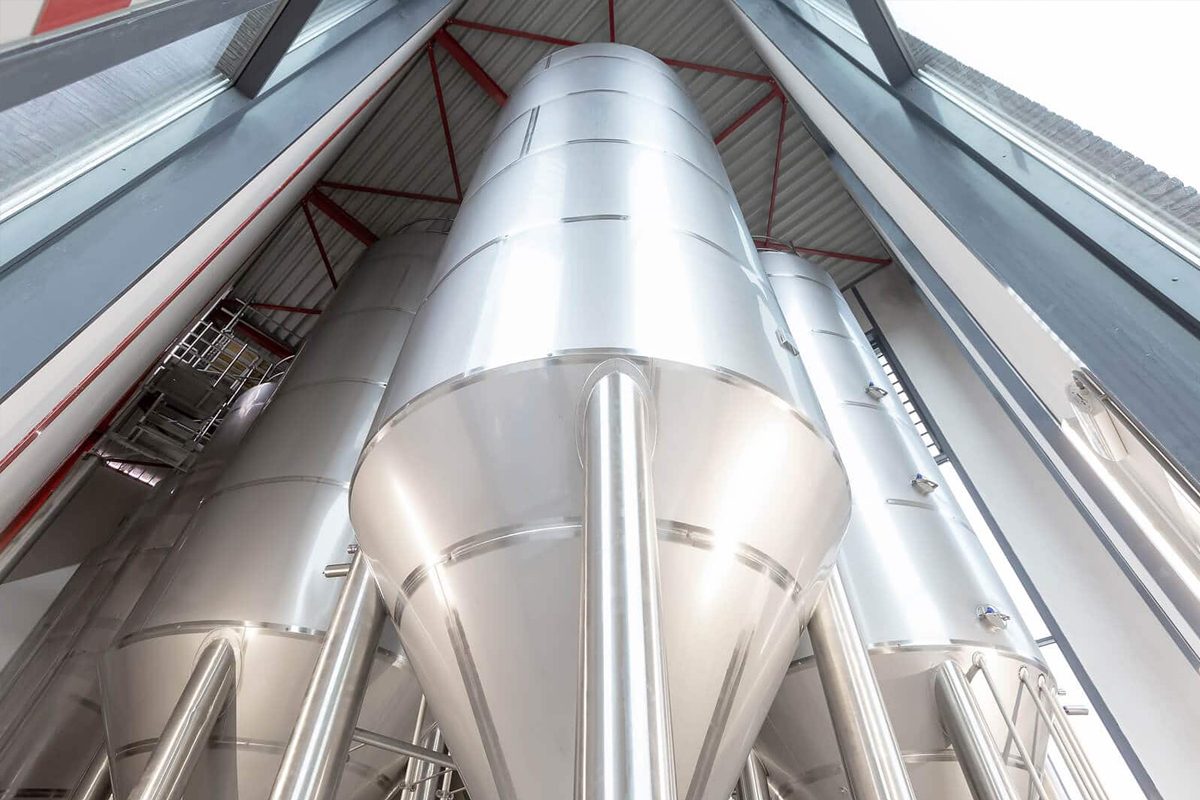
Introduction to Fermentation Tank Headspace
In brewery operations, the fermentation tank headspace is an integral part of the brewing process. This space, located between the surface of the fermenting liquid and the top of the tank, is designed to accommodate gas expansion, foam production, and pressure changes during fermentation. As yeast metabolizes sugars into alcohol and carbon dioxide, significant volumes of gas are released. The headspace allows this CO2 to accumulate and be safely vented without compromising the structural integrity of the tank or disrupting the fermentation process.
Understanding and managing headspace helps optimize fermentation efficiency, ensure yeast health, and maintain product quality. Poor headspace management can lead to over-pressurization, off-flavors from oxidation, or excessive foaming. By designing tanks with appropriate headspace and integrating features like pressure relief valves and CO2 monitoring, brewers can control these variables, ensuring safe and efficient operations.
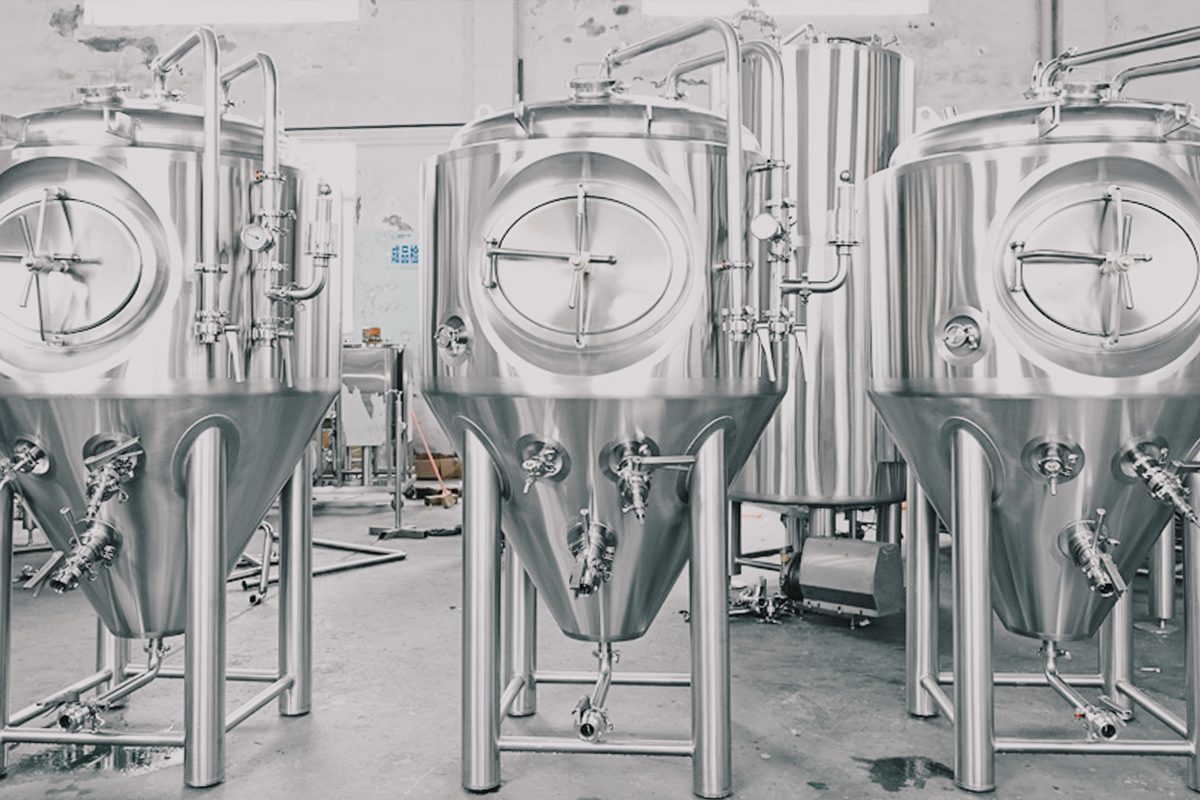
Key Functions of Fermentation Tank Headspace
The fermentation tank headspace plays a vital role in managing various dynamic processes during fermentation. In brewery operations, ensuring headspace is designed and managed effectively can help maintain product quality, safety, and yeast performance. Here are the key functions of fermentation tank headspace:
Gas Management and CO2 Expansion
During fermentation, yeast converts sugars into alcohol and carbon dioxide (CO2). The headspace helps contain the large amounts of carbon dioxide produced during the process. Without sufficient headspace, excessive pressure can build up inside the tank, leading to potential safety hazards, such as tank ruptures or compromised fermentation performance. Effective gas management, often supported by features like pressure relief valves, ensures that CO2 is safely vented, preventing over-pressurization and maintaining an ideal environment for yeast activity.
Foam and Krausen Development
Foam, also known as krausen in brewing, is an expected byproduct of fermentation as yeast metabolizes sugars. The headspace must provide enough room for krausen development, as insufficient space can lead to overflow and spillage, wasting valuable product. The headspace absorbs the natural foam expansion, ensuring that fermentation continues smoothly without requiring constant intervention. Managing this foam buildup, especially during high-fermentation periods, is critical for avoiding operational disruptions.
Temperature Control and Heat Expansion
Fermentation is an exothermic process, meaning it generates heat. This heat can cause gases within the headspace to expand, increasing pressure inside the tank. Properly designed headspace accommodates this thermal expansion, allowing for a more controlled fermentation. Temperature regulation systems, such as cooling jackets integrated into the tank, also rely on headspace to ensure stable conditions, helping to prevent rapid temperature fluctuations that could affect yeast health and fermentation quality.
Fermentation Control and Scaling
For breweries looking to scale their operations, managing headspace becomes even more important. As batch sizes increase, so do the volumes of CO2 and foam generated. In large-scale fermentation tanks, headspace management becomes a critical factor in maintaining consistent results across batches. ZYB Craft takes headspace requirements into account in tank design to ensure that expanded production does not compromise the safety or quality of the beer.
The fermentation tank headspace is essential for managing gas, foam, temperature, and scaling during fermentation. Proper design and management of this space ensure efficient, safe, and high-quality brewing operations.
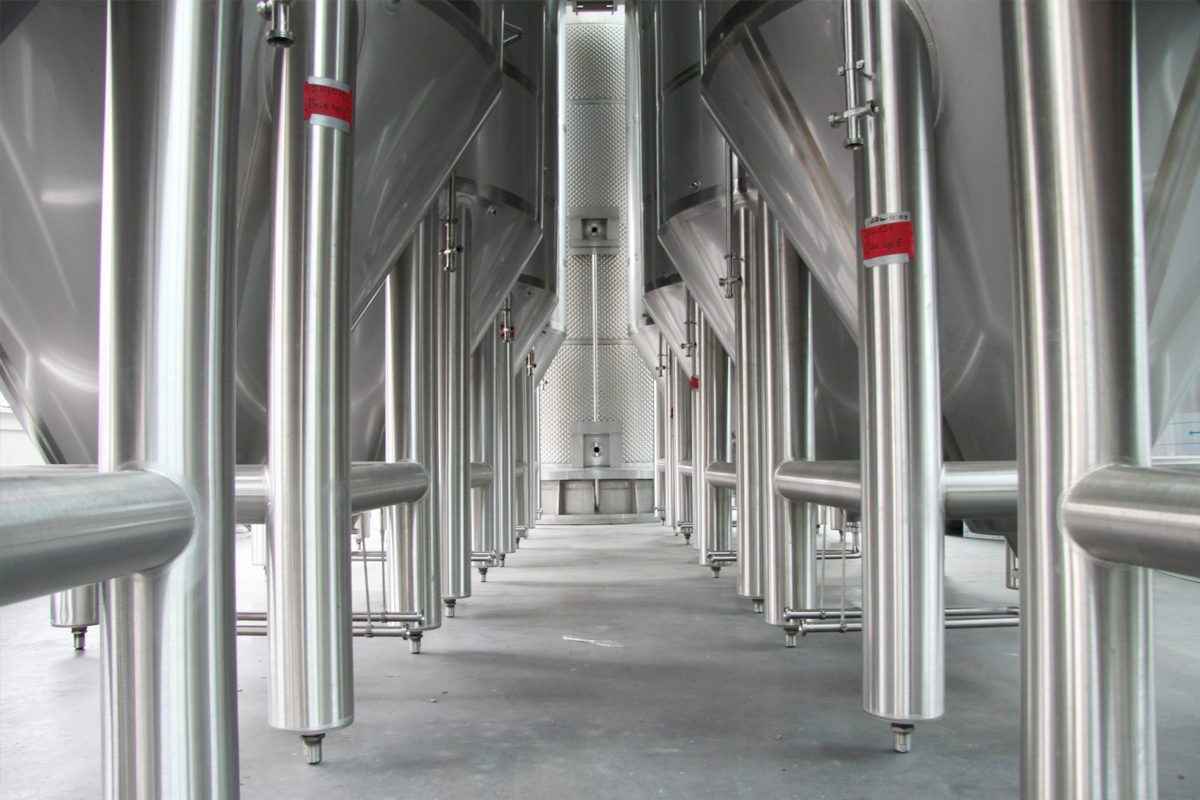
The Role of Oxygen in the Headspace
Oxygen plays a nuanced role in the fermentation process, with its presence being both essential and potentially harmful, depending on the stage of fermentation. Proper management of oxygen in the fermenter headspace ensures optimal performance of the yeast and protects brew quality. Below is a breakdown of how oxygen affects the fermentation process and how it can be controlled.
Oxygen at the Start of Fermentation
At the beginning of fermentation, oxygen is necessary for yeast growth and reproduction. Yeast cells require oxygen during the initial aerobic phase to build strong cell walls and develop essential compounds like sterols and fatty acids. These elements create a healthy yeast population that can withstand anaerobic fermentation conditions. A small amount of oxygen in the headspace at this stage helps yeast multiply and ensures a robust fermentation process. For breweries, ensuring that there is sufficient oxygen during this phase supports yeast health, which is a crucial aspect of producing high-quality beer.
Oxygen in Later Stages
Once fermentation moves from the aerobic to the anaerobic phase, the presence of oxygen becomes detrimental. Oxygen in the headspace at this point can lead to oxidation, negatively affecting the flavor, aroma, and stability of the beer. Oxidation can result in off-flavors such as cardboard or stale beer notes and can significantly reduce the shelf life of the finished product. For this reason, it is crucial to limit or eliminate oxygen from the headspace during the later stages of fermentation, as it can damage the product and diminish the quality that professional breweries, aim to achieve.
Managing Oxygen Exposure
To maintain the delicate balance of oxygen during fermentation, several techniques are employed to manage oxygen exposure in the headspace. At the start of fermentation, oxygen is often intentionally introduced through aeration systems to ensure yeast health. However, as fermentation progresses, steps must be taken to reduce oxygen levels. Breweries typically use sealed fermentation tanks to minimize air exposure and can purge oxygen from the headspace using inert gases like nitrogen or carbon dioxide. These measures help maintain an oxygen-free environment during critical anaerobic fermentation phases, protecting the beer from unwanted oxidation. Monitoring oxygen levels and employing advanced systems, such as pressure-relief valves and CO2 purging, are essential practices for breweries to safeguard product integrity.
By carefully managing the role of oxygen in the headspace, breweries can ensure optimal fermentation outcomes, producing beers with superior flavor, aroma, and shelf stability. ZYB Craft’s fermentation tanks are designed to help brewers control oxygen exposure effectively throughout the fermentation process.
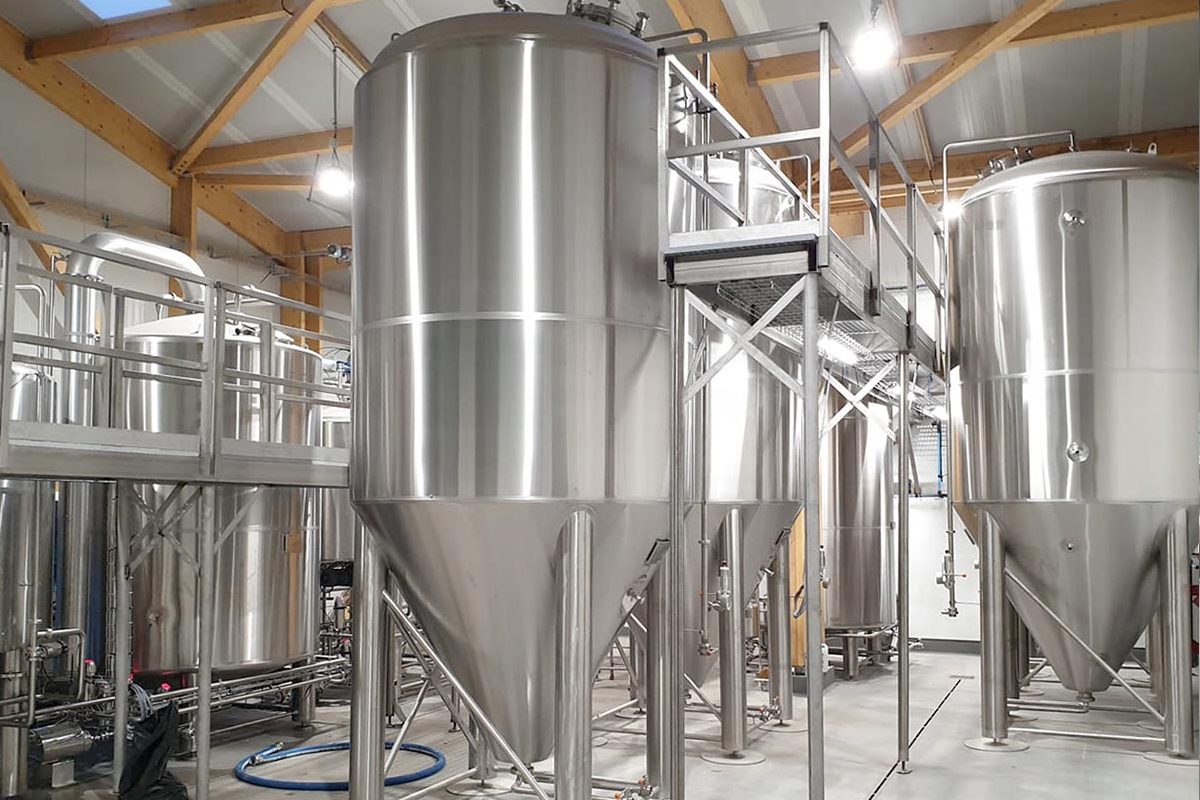
Impact on Yeast Health and Fermentation Activity
The fermentation tank headspace plays a crucial role in ensuring the health of yeast and maintaining the overall fermentation activity. Yeast, being the powerhouse behind the fermentation process, requires an optimal environment to perform effectively. Poor headspace management can lead to issues such as excessive CO2 buildup and pressure imbalances, which can negatively impact yeast performance and the quality of the final product. Here’s how headspace affects yeast health and activity during fermentation:
Excessive CO2
As yeast ferments sugar into alcohol, it also produces carbon dioxide (CO2) as a byproduct. In an enclosed fermentation tank, CO2 accumulates in the headspace. While some CO2 is necessary to create the right anaerobic environment for yeast, excessive CO2 can be detrimental to yeast health. High levels of CO2 in the headspace can increase the pressure within the tank, which can cause the yeast to flocculate (settle) prematurely. Premature flocculation halts fermentation before it is fully complete, leading to incomplete sugar conversion and under-attenuated beer, which impacts the taste and consistency of the product. Proper management of the headspace ensures that CO2 is safely vented, maintaining a balanced environment where yeast can continue its work without being overwhelmed by gas accumulation.
Pressure and Yeast Performance
In addition to excessive CO2, pressure within the fermentation tank can have a significant effect on yeast performance. While some yeast strains are more tolerant of pressure, most strains can experience stress when exposed to high-pressure environments. This stress can inhibit yeast activity, leading to slower fermentation times, incomplete fermentation, and undesirable flavor outcomes. For example, yeast under pressure may produce fewer esters and phenols, which are key contributors to the flavor profile in certain beer styles. Moreover, high pressure can cause yeast cells to lose their vitality, reducing their ability to metabolize sugars and leading to off-flavors in the final product.
Properly designed fermentation tanks include pressure relief systems that allow brewers to regulate the pressure within the headspace. These systems help maintain an environment where yeast can thrive, ensuring consistent fermentation rates and preserving the intended flavor profile. Additionally, by preventing excessive pressure, brewers can avoid issues such as tank damage, safety hazards, and poor yeast performance.
The headspace within fermentation tanks has a direct impact on yeast health and fermentation activity. By carefully managing CO2 levels and pressure, breweries can ensure that yeast performs optimally, leading to a successful fermentation process and a high-quality end product.
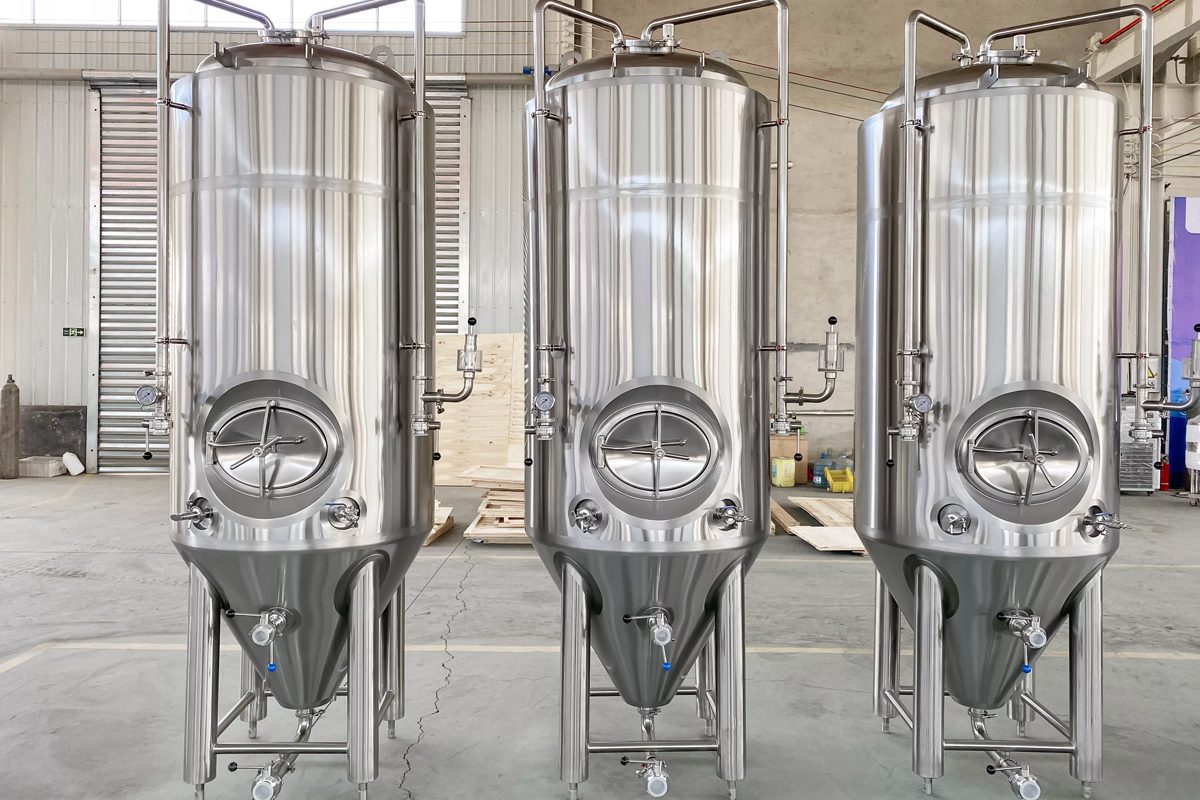
Foam Management in the Headspace
Foam management is a key consideration in the design and operation of fermentation tanks, as uncontrolled foam, or krausen, can disrupt the fermentation process and create sanitation issues. Proper management of the foam within the headspace ensures efficient fermentation and a clean brewing environment. This section will explore the challenges of foam management, particularly over-foaming, and common solutions such as blow-off tubes and anti-foam additives.
Over-foaming and Blow-off
During active fermentation, especially in the early stages, yeast produces a significant amount of foam as it metabolizes sugars and releases carbon dioxide. This foam, known as krausen in beer brewing, can expand significantly and potentially exceed the volume of the fermentation tank’s headspace. When headspace is insufficient, over-foaming can occur, leading to the foam spilling out of the tank through airlocks or pressure-relief systems in a process known as blow-off. Over-foaming not only creates a mess but also wastes products and risks contamination. For breweries, especially those using open or semi-closed fermenters, controlling foam can help avoid costly interruptions to the brewing process.
Use of Blow-off Tubes
One of the most effective ways to manage over-foaming is by using blow-off tubes. These tubes are attached to the top of the fermentation tank, allowing excess foam and gas to escape safely into a sanitized container or vessel. Blow-off tubes are particularly helpful during the most active phases of fermentation when foam expansion is at its peak. By directing foam and gas out of the tank, blow-off tubes help to prevent pressure build-up in the headspace and reduce the risk of foam overflow, maintaining the cleanliness of the brewery and protecting the integrity of the fermentation.
Anti-foam Additives
In addition to mechanical solutions like blow-off tubes, some brewers opt to use anti-foam additives to control foam levels within the headspace. These additives work by breaking down the surface tension of foam bubbles, reducing the overall volume of krausen produced during fermentation. Anti-foam additives are particularly useful in large-scale brewing operations where excessive foam could result in significant product loss or process disruption. However, while effective, the use of anti-foam additives must be carefully managed to avoid altering the characteristics of the beer, such as head retention or mouthfeel. Many brewers prefer mechanical solutions like blow-off tubes over additives to preserve the natural quality of their brew.
Effective foam management is a critical aspect of headspace control in fermentation tanks. By utilizing blow-off tubes and, when necessary, anti-foam additives, brewers can prevent over-foaming and ensure that fermentation proceeds smoothly.
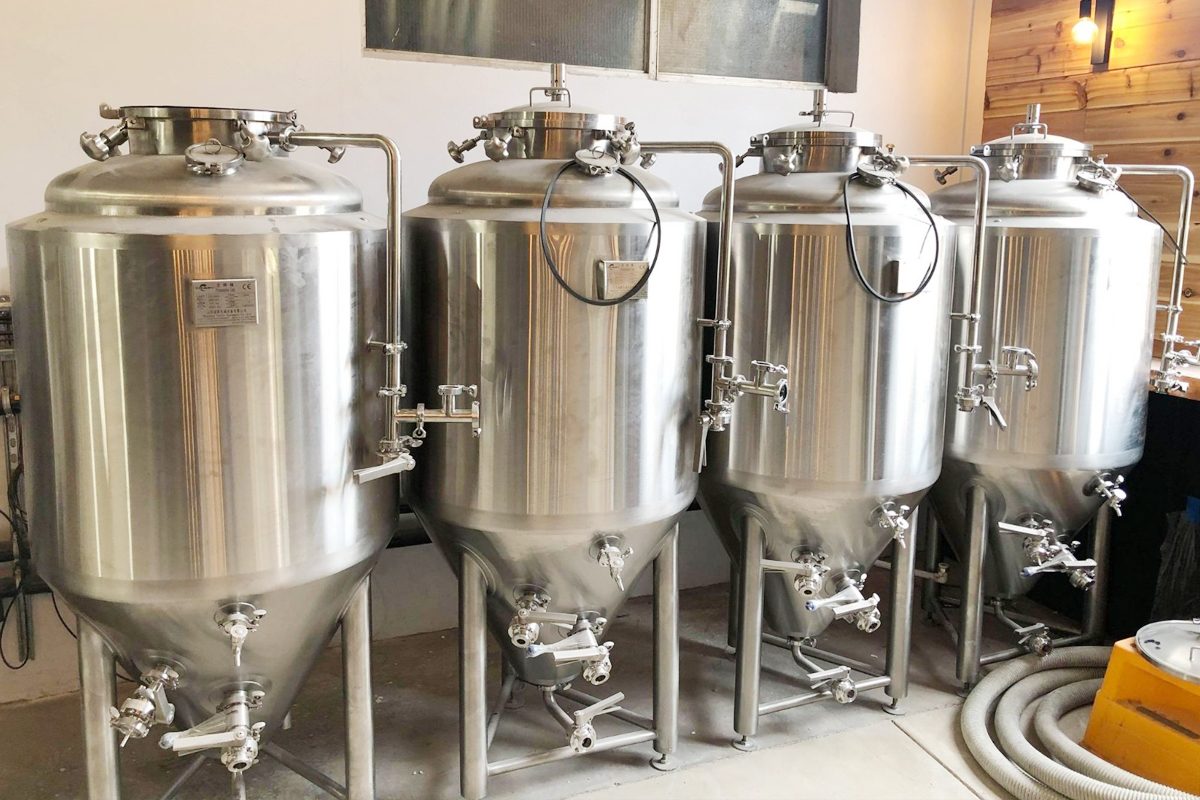
Temperature Regulation and the Headspace
Temperature regulation plays a crucial role in maintaining the quality and consistency of fermentation. As fermentation is an exothermic process, the heat generated during yeast activity can cause fluctuations within the fermentation tank. This, in turn, impacts the gases in the headspace and affects the overall fermentation environment. Proper management of temperature within the headspace is key to controlling fermentation and ensuring optimal yeast performance. Below are the essential considerations for temperature regulation as it relates to the fermentation tank headspace.
Thermal Expansion of Gases
As fermentation progresses, the heat generated by yeast activity causes gases in the headspace, primarily carbon dioxide (CO2), to expand. This thermal expansion increases the pressure within the tank. If the headspace is not properly sized or managed, the expanding gases can lead to excessive pressure, which may result in unwanted blow-offs, tank damage, or yeast stress. The headspace provides room for this gas expansion, helping to mitigate pressure fluctuations that could negatively impact fermentation. Breweries that operate with poorly managed headspace risk inconsistent fermentation results, as the rising pressure could inhibit yeast activity or lead to inefficient gas release.
Cooling Jackets and Headspace Control
Many fermentation tanks are equipped with cooling jackets. These jackets allow brewers to regulate the temperature of the fermenting liquid by circulating cold water or glycol around the tank. By controlling the temperature of the liquid, brewers can also control the conditions within the headspace. Proper cooling reduces the risk of thermal expansion of gases and helps maintain a stable environment for fermentation. Cooling jackets work in tandem with headspace design to manage heat and gas exchange effectively, preventing excessive pressure build-up and ensuring yeast remains in optimal conditions throughout the fermentation process.
Importance of Consistent Temperature
Maintaining a consistent temperature during fermentation helps with yeast health, flavor development, and fermentation efficiency. Fluctuations in temperature can cause unwanted changes in yeast metabolism, resulting in inconsistent flavors, off-notes, and even stalled fermentation. Additionally, inconsistent temperatures can cause rapid gas expansion and contraction in the headspace, leading to spikes in pressure that may disrupt the fermentation process. By carefully regulating temperature and providing sufficient headspace, brewers can ensure that gases like CO2 are properly managed, reducing the likelihood of pressure-related issues and enhancing the overall quality of the final product.
Temperature regulation within the fermentation tank and headspace is a fundamental aspect of brewing. With the use of cooling jackets and attention to gas expansion, brewers can maintain a consistent environment that supports yeast activity and product quality. ZYB Craft’s fermentation tanks are designed with these considerations in mind, offering professional brewers the tools they need to regulate temperature effectively and manage headspace pressure, ensuring a smooth and efficient fermentation process.
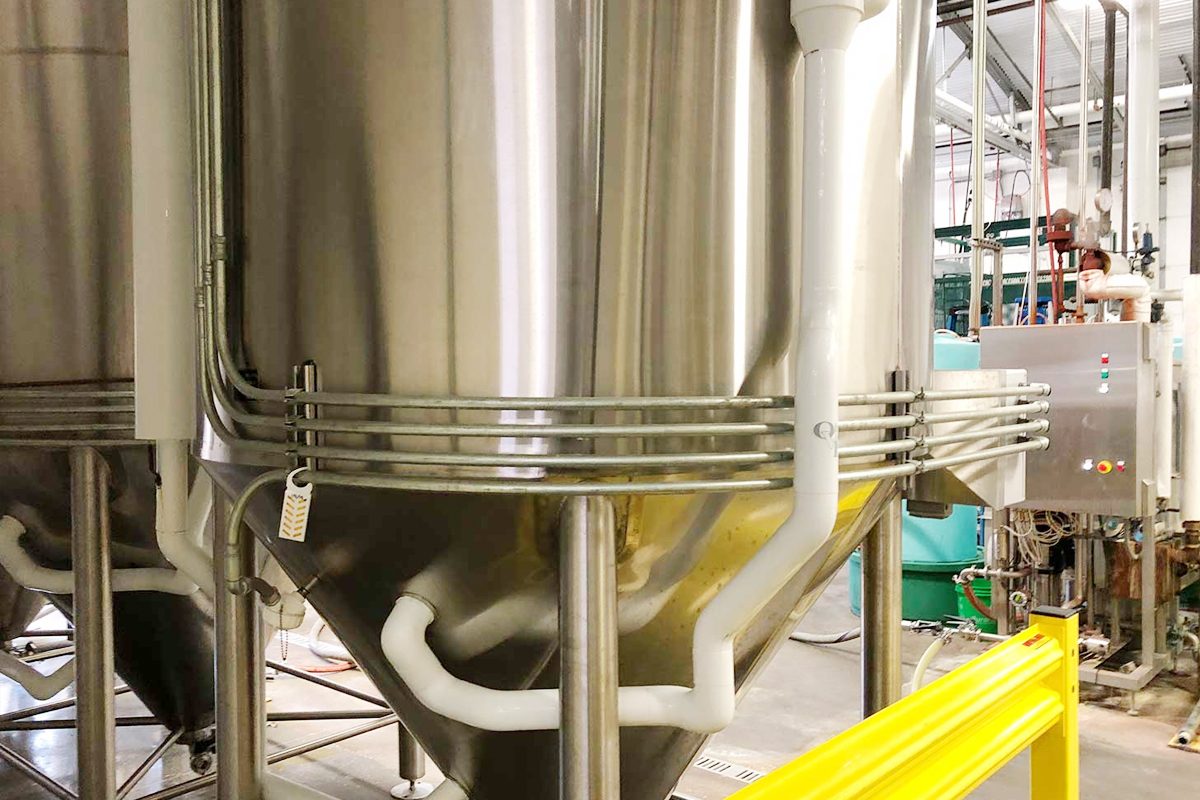
Safety Considerations
Ensuring safety during fermentation is a top priority for any brewery, as improper management of the fermentation tank headspace can lead to dangerous conditions. The accumulation of gases, increased pressure, and potential for tank rupture must be carefully monitored. For a professional brewery setup, safety features such as pressure relief valves and proper tank design can help reduce risk. Below are key safety considerations related to fermentation tank headspace.
Pressure Relief Valves
Fermentation generates significant amounts of carbon dioxide (CO2), which accumulates in the headspace of the tank. Without a way to safely release this pressure, the internal pressure within the tank can reach unsafe levels. Pressure relief valves are a critical safety feature in fermentation tanks, designed to automatically release excess gas when the internal pressure exceeds a set threshold. These valves prevent dangerous pressure build-up and protect both the tank and the surrounding environment from potential hazards.
Tank Rupture Risks
One of the most serious risks associated with improper headspace management is the potential for tank rupture. If CO2 and other gases produced during fermentation are not properly vented, the increasing pressure can cause structural failure in the tank. A rupture can result in significant product loss, equipment damage, and safety hazards for brewery staff. This risk is particularly high in tanks with insufficient headspace or poorly managed pressure relief systems.
Hazardous Environments
Another safety consideration when dealing with fermentation tank headspace is the potential creation of hazardous environments due to CO2 accumulation. Carbon dioxide is heavier than air and can displace oxygen in enclosed spaces, creating a suffocation risk for brewery workers. In confined areas, such as fermentation rooms, the uncontrolled release of CO2 from tank headspace can lead to dangerous conditions. Proper ventilation and monitoring systems are essential in preventing CO2 buildup. Breweries should equip their facilities with CO2 detectors to alert staff of dangerous gas levels, and ensure that headspace management and gas venting are effectively controlled to maintain a safe working environment.
Proper headspace management is crucial not only for the quality of fermentation but also for the safety of brewery operations.
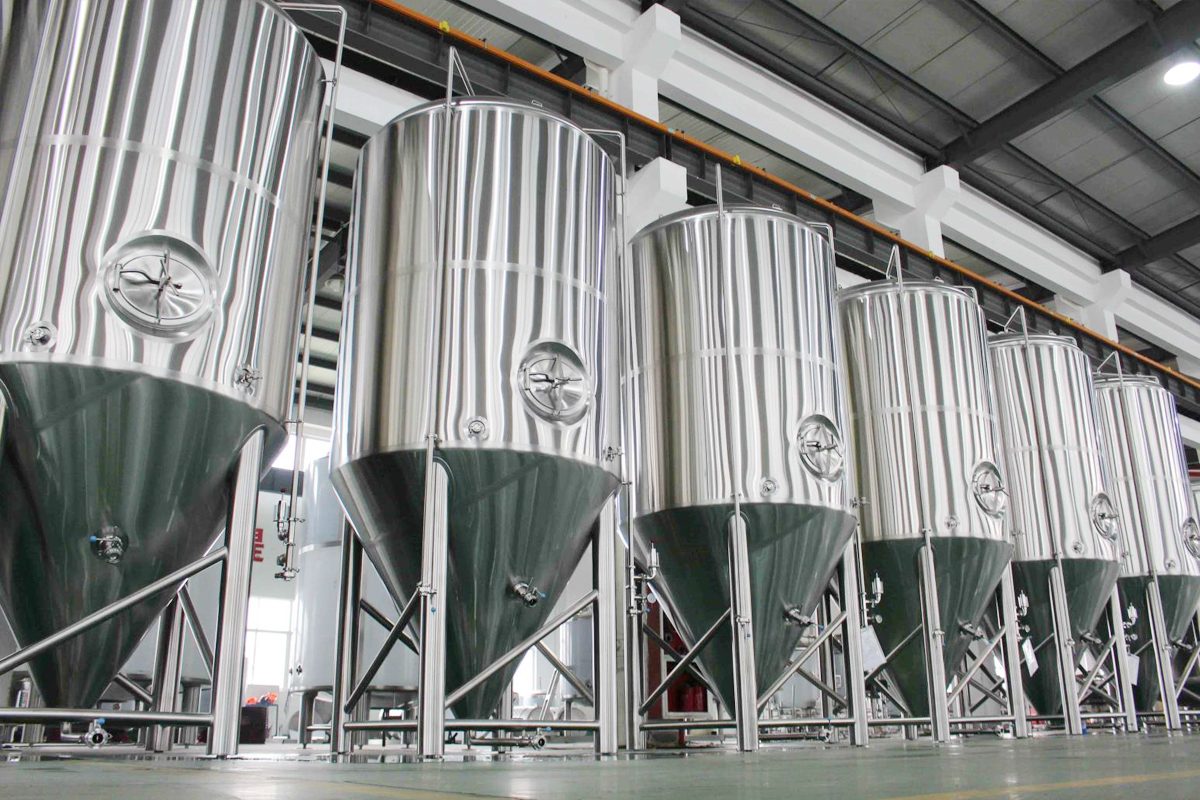
Impact on Product Quality
The fermentation tank headspace plays a significant role in shaping the overall quality of the final product. Properly managed headspace contributes to key aspects of beer, wine, and spirits production, including flavor development, aroma preservation, and clarity. Understanding how headspace affects these elements can help produce consistently high-quality beverages.
Flavor Development
One of the most direct ways headspace impacts product quality is through its influence on flavor development. During fermentation, yeast produces a variety of compounds that contribute to the beer or wine’s taste. The amount of carbon dioxide (CO2) in the headspace affects the balance of these compounds, particularly esters and phenols, which are responsible for fruity and spicy flavors. An excess of CO2 in the headspace can suppress the production of these flavor compounds, leading to a more neutral or even bland product. Additionally, poor headspace management can lead to oxidation, which introduces undesirable off-flavors like cardboard or stale beer notes. Proper headspace design, combined with the use of pressure control systems, helps brewers maintain the right environment for optimal flavor development.
Aroma Preservation
Aroma is a critical sensory element that defines the quality of a beer or wine, and the headspace within the fermentation tank plays a crucial role in preserving these volatile aromatic compounds. Oxygen exposure in the headspace during fermentation can lead to oxidation, which degrades the aromas, causing them to fade or become undesirable. Headspace oxygen management can help preserve the delicate aromas of hoppy beers or wines with fruity and floral notes.
Clarity and Sedimentation
The headspace also affects the clarity and sedimentation of the final product. In many types of beer and wine, achieving a clear, sediment-free appearance is a key quality indicator. Proper headspace management ensures that yeast and sediment remain suspended for the optimal duration during fermentation, preventing premature flocculation due to high CO2 pressure. When CO2 pressure builds too quickly or becomes excessive in the headspace, it can cause yeast to settle prematurely, resulting in cloudiness and incomplete fermentation. A well-designed headspace allows for controlled sedimentation, leading to a clearer product with a smooth finish.
Management of fermenter headspace can maintain product quality. By regulating gas exchange, controlling oxygen levels, and ensuring appropriate sedimentation, brewers can enhance flavor development, preserve aromas, and achieve the desired clarity in their products.
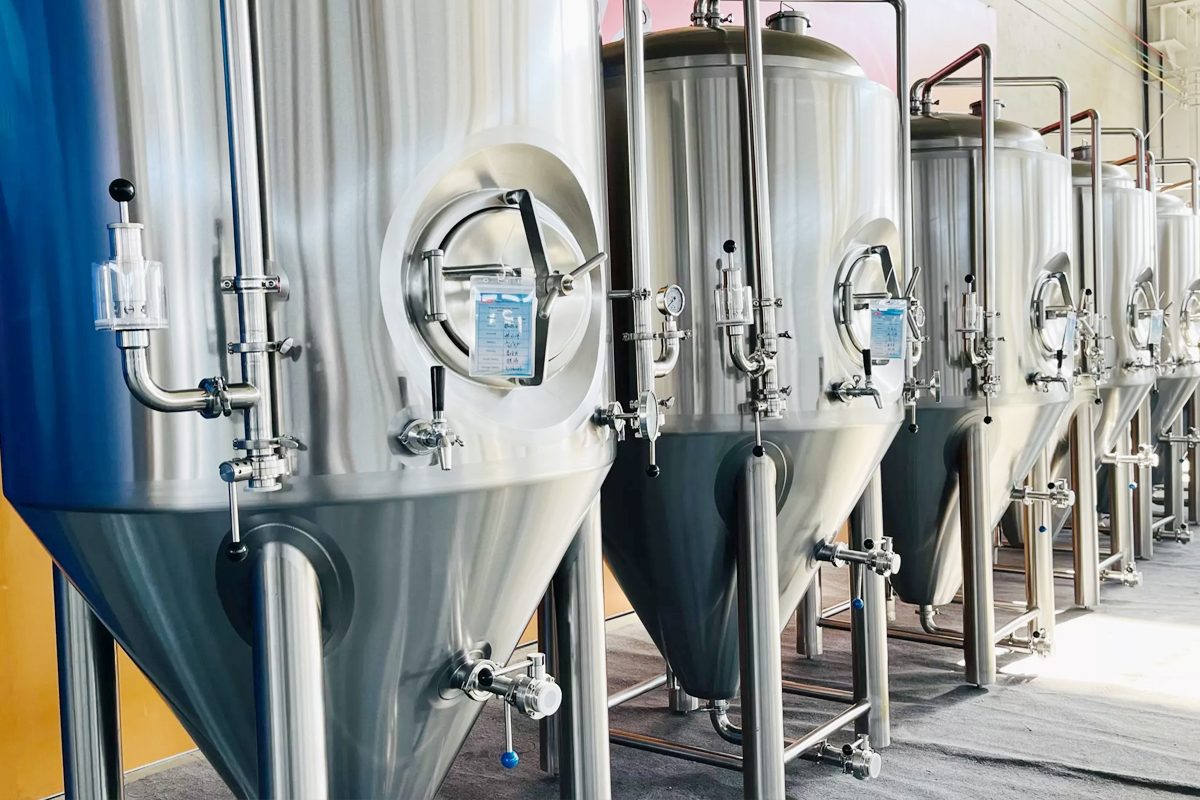
Tank Design and Headspace Considerations
The design of fermentation tanks plays a crucial role in managing headspace and ensuring a smooth, controlled fermentation process. For breweries, choosing the right tank design impacts not only the quality of the final product but also the efficiency of gas management, foam control, and overall brewing operations. Below are key considerations for two common types of fermentation tanks: cylindroconical and open versus closed tanks.
Cylindroconical Tanks
Cylindroconical tanks are widely used in modern breweries due to their efficiency, versatility, and ability to handle a variety of beer styles. These tanks feature a cylindrical top and a conical bottom, allowing for optimal fermentation management. The cylindrical top portion of the tank provides adequate headspace for gas expansion and krausen (foam) development during active fermentation. This design helps ensure that carbon dioxide (CO2) is effectively vented while providing enough room to manage foam without overflow.
The conical bottom of the tank makes yeast collection and sediment removal much easier. This feature is especially useful for brewers looking to harvest yeast for future batches or for those producing beers that require extended fermentation times. The sloped design aids in settling out solids like yeast and trub, keeping the beer clean and ensuring proper sedimentation control.
From a headspace perspective, cylindroconical tanks are ideal because their design allows for flexibility in managing gas build-up and pressure. Brewers can adjust pressure relief systems to accommodate the volume of CO2 generated during fermentation, minimizing the risk of over-pressurization.
Open VS Closed Fermentation Tanks
The choice between open and closed fermentation tanks significantly impacts headspace management, as each design brings different advantages and challenges.
Open Fermentation Tanks
Open fermentation tanks are traditional vessels often used in specific brewing styles such as Belgian ales or German wheat beers. These tanks are open to the air, allowing CO2 to escape freely and enabling brewers to closely monitor the fermentation process. The headspace in open tanks is unlimited due to their exposed design, which makes foam and krausen easier to manage without the risk of overflow. However, exposure to oxygen can lead to oxidation if not carefully controlled, which may negatively impact the beer’s flavor and stability.
Open fermentation tanks also introduce the possibility of contamination from airborne microbes or particles, which can affect the consistency and cleanliness of the beer. For brewers using open fermentation tanks, it is critical to maintain a clean environment and use strict sanitation practices to protect the quality of the brew.
Closed Fermentation Tanks
Closed fermentation tanks, on the other hand, are sealed vessels designed to contain the gases generated during fermentation. These tanks are more common in modern brewing due to their ability to control oxygen exposure and retain carbonation. The headspace in a closed fermentation tank must be carefully calculated to accommodate CO2 build-up, krausen development, and temperature fluctuations. Proper headspace management in these tanks ensures that pressure is kept within safe limits while allowing brewers to control gas release through pressure relief valves.
Closed fermentation tanks help preserve the beer’s flavor and prevent oxidation, making them ideal for most styles of beer where oxygen exposure is undesirable. Additionally, these tanks are equipped with fittings that allow brewers to monitor fermentation pressure, temperature, and gas levels, providing a more controlled environment for fermentation.
The choice between cylindroconical, open, and closed fermentation tanks significantly influences headspace management and overall fermentation control. Cylindroconical tanks offer flexibility and ease of sediment management, while open and closed fermentation tanks cater to different brewing styles and oxygen management needs.
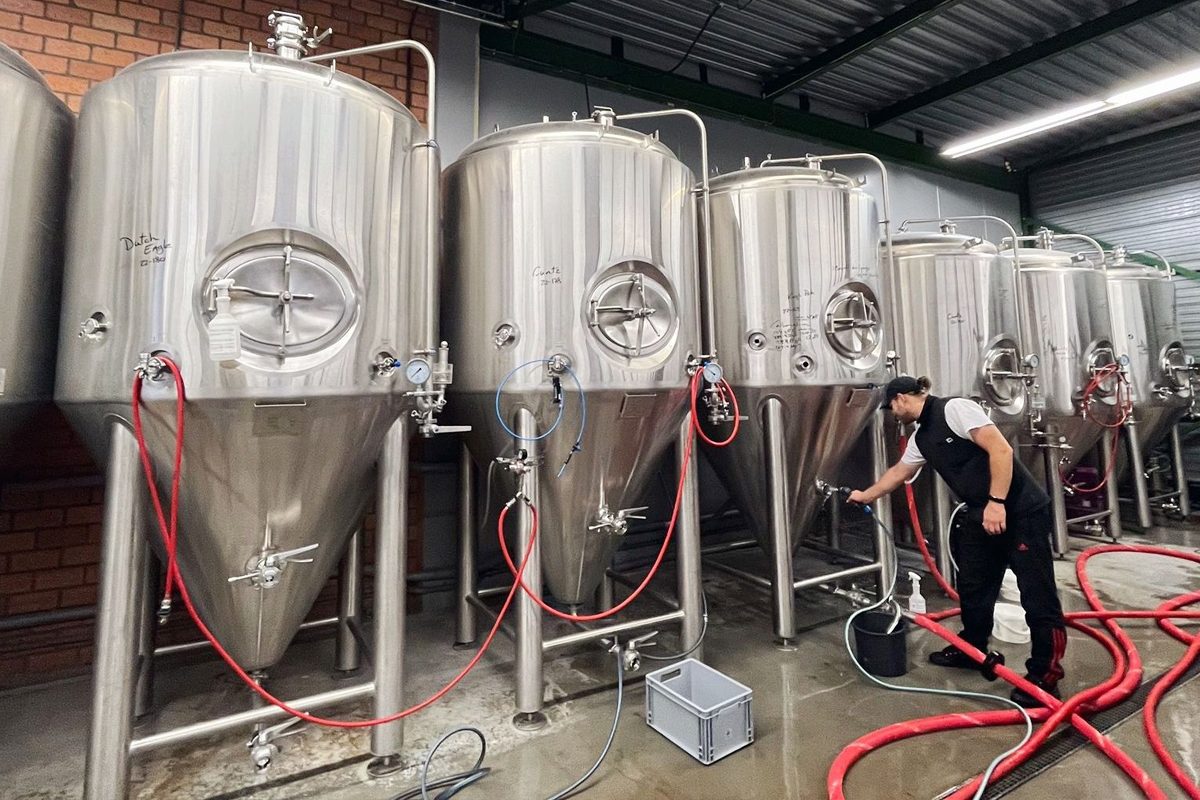
Risks of Inadequate or Excessive Headspace
Proper management of headspace in fermentation tanks is essential for ensuring both the safety and quality of the brewing process. When headspace is either inadequate or excessive, it can lead to several complications that can affect the fermentation process, the safety of the equipment, and the final product. For professional winemakers, it is critical to understand the risks associated with improper headspace management. Below are some of the key risks of having either too little or too much headspace.
Overpressurization
One of the most significant risks of inadequate headspace is overpressurization. During fermentation, yeast produces carbon dioxide (CO2), which accumulates in the headspace of the tank. If the headspace is too small, there may not be enough room for the gas to expand, leading to a rapid increase in pressure. Overpressurization can have serious consequences, including the risk of tank rupture or damage to equipment. It also poses a safety hazard to workers. To prevent this, fermentation tanks must be designed with adequate headspace to allow for the accumulation and safe venting of CO2.
Oxygen Exposure
Excessive headspace can lead to another critical issue: oxygen exposure. Oxygen is both essential and detrimental in fermentation, depending on the stage of the process. While yeast requires oxygen during the initial phase of fermentation to reproduce, any oxygen present after this phase can lead to oxidation, which negatively impacts the flavor and quality of the beer. If the headspace is too large, it increases the amount of oxygen in contact with the beer, heightening the risk of oxidation. This can result in off-flavors, such as cardboard or stale notes, and reduce the shelf life of the product.
Inconsistent Fermentation
Both inadequate and excessive headspace can lead to inconsistent fermentation results. When headspace is insufficient, yeast may become stressed due to high levels of CO2, leading to premature flocculation or stalled fermentation. This can result in incomplete sugar conversion, under-attenuation, and an imbalanced flavor profile in the final product. On the other hand, too much headspace can lead to a lack of proper CO2 retention, which may impact carbonation levels and the development of certain flavor compounds. Inconsistent fermentation can cause batches to vary in quality, making it difficult for brewers to maintain consistency across their products. Properly managed headspace ensures that yeast can function optimally, producing consistent results with each fermentation cycle.
The risks of inadequate or excessive headspace in fermentation tanks are significant, from safety concerns related to overpressurization to quality issues like oxidation and inconsistent fermentation. Carefully designed headspace ensures a balanced environment, allowing for safe gas management and optimal fermentation conditions. By maintaining the correct headspace, brewers can achieve consistent, high-quality results while minimizing potential risks.
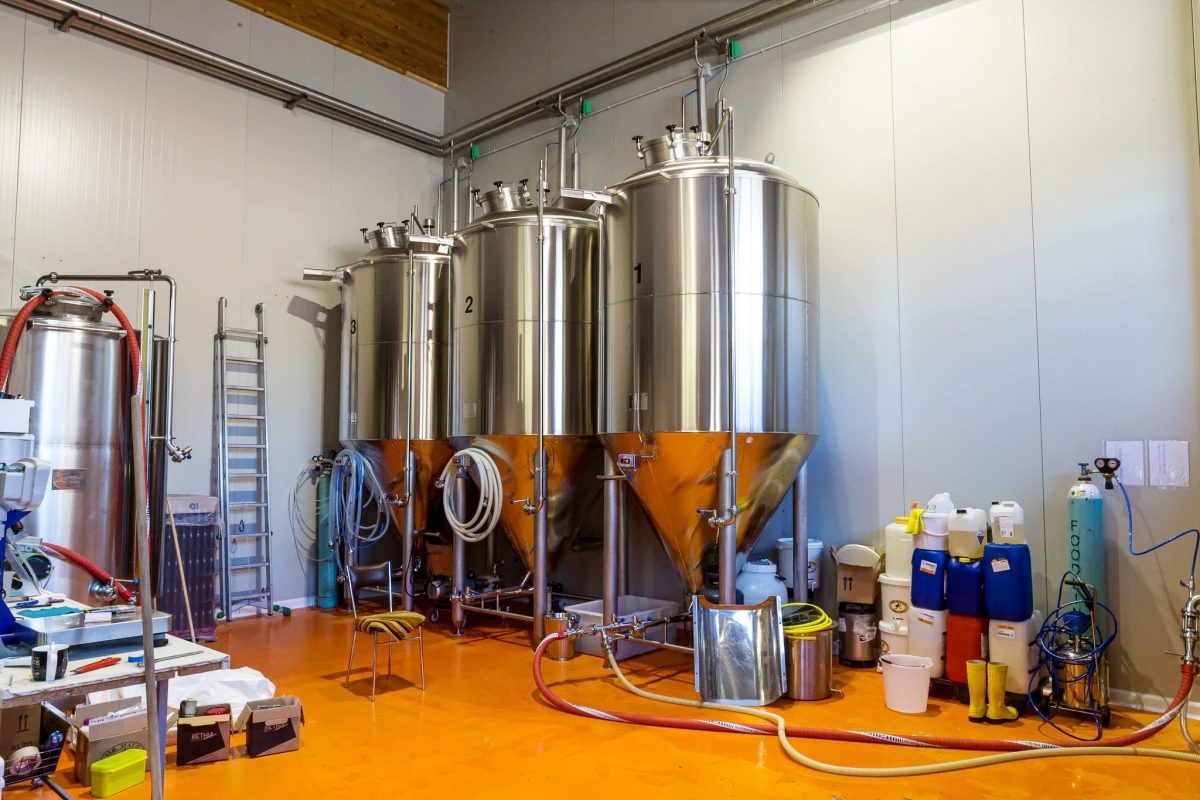
Summary
The fermentation tank headspace plays a vital role in ensuring the safety, efficiency, and quality of the brewing process. Proper headspace management helps control gas buildup, particularly carbon dioxide (CO2), and prevents problems such as overpressurization, oxygen exposure, and inconsistent fermentation. Inadequate headspace can lead to dangerous pressure levels and tank damage, while excessive headspace increases the risk of oxidation, negatively affecting the beer’s flavor and shelf life. Additionally, headspace directly impacts yeast health, foam management, and temperature regulation, all of which are critical to a successful fermentation process. Whether using cylindroconical, open, or closed fermentation tanks, brewers must carefully manage headspace to optimize fermentation.
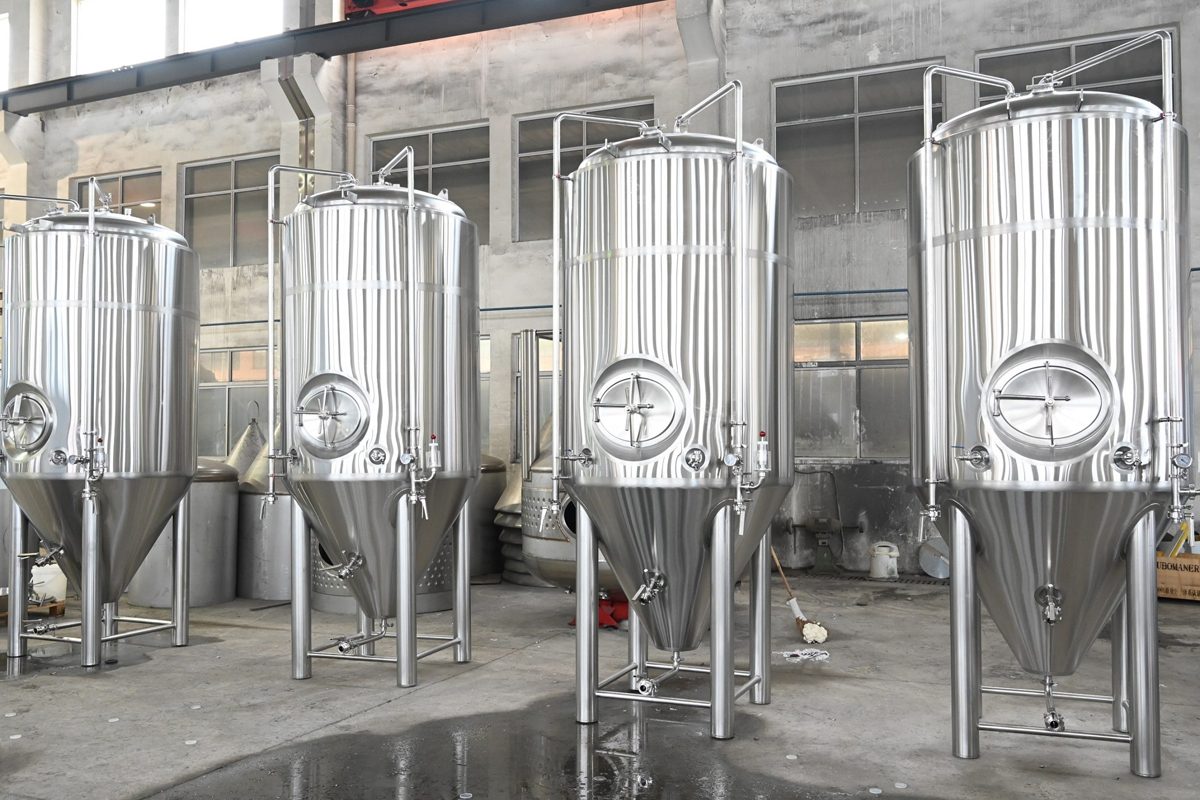
Get Turnkey Brewery Solutions
At ZYB Craft, we understand that every aspect of the brewing process, including the management of fermentation tank headspace, plays a critical role in producing high-quality beer. We offer comprehensive turnkey brewery solutions, tailored to meet the unique needs of your brewing operation. Our fermentation tanks are designed with precision to ensure optimal headspace management, providing the right balance of gas control, foam regulation, and oxygen exposure protection. Whether you’re a small craft brewery or a large commercial operation, ZYB Craft offers customizable solutions that include everything from tank design and installation to support and training.
Our turnkey solutions cover all stages of brewing, from mashing to fermentation, packaging, and more. With ZYB Craft’s expertise, you’ll have access to state-of-the-art equipment, designed to help you scale efficiently and maintain consistency in every batch. Get in touch with our team to learn how we can provide you with complete, efficient brewery equipment that delivers exceptional results every time.



